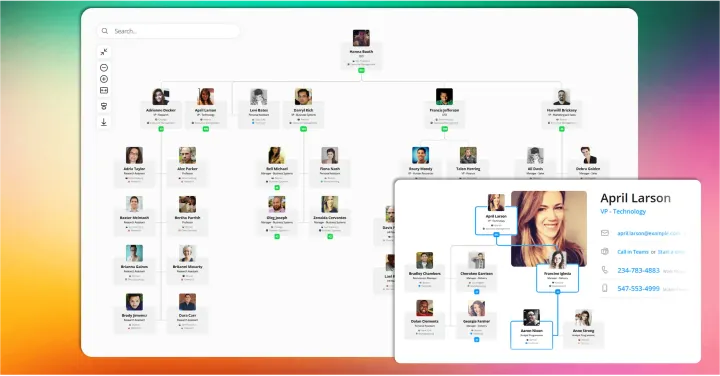Cracking the Code of Organizational Design
Cracking the code behind intentional organizational design - explore why it matters, how to approach it, popular frameworks to consider, and steps leaders can take to build optimized structures for executing strategy.

Imagine you're trying to solve a Rubik's Cube. Each twist and turn is deliberate, aiming to align the colors just right.
Now, replace that cube with your organization. Instead of colors, you're aligning goals, strategy, culture, and talent. Welcome to the world of organizational design, where the stakes are higher than just solving a puzzle on your coffee break.
In this post, I’ll walk you through why organizational design matters, the key steps in the design process, and some of the most popular models out there.
Whether you’re leading a startup or an established enterprise, understanding organizational design is essential to building an organization poised for long-term success.
So, What Is Organizational Design?
Before diving into the why and how, it’s important to clarify what exactly organizational design is in the first place.
At its core, organizational design determines how job tasks are formally divided, grouped, and coordinated within an organization. It encompasses a few key elements:
Structure - How an organization is structured into different divisions, departments, teams, and roles. This includes the chains of command and spans of control across the entity.
Coordination - Defining the relationships and workflows between the different units and specifying how they will collaborate and communicate.
Centralization - Deciding where decision-making authority will reside within the organization and how decentralized or centralized authority will be.
Specialization - Determining what specific skill sets and capabilities each role and unit will focus on rather than being generalists.
Formalization - Codifying policies, procedures, job descriptions, and rules that specify expected employee behaviors.
Taken together, these elements of organizational design create a kind of blueprint for making clear who does what in an organization and how different roles and units interact to get work done. It establishes the systems and processes necessary for coordinating collective effort across large groups of specialized employees.
Why Organizational Design Matters
More than a boring org chart in some forgotten PowerPoint, organizational design has an outsized impact on a company’s ability to get things done. The right structures and systems allow information, talent, and ideas to flow freely across silos. They empower employees by clarifying decision rights and accountabilities. And they create an environment where people are motivated to collaborate towards shared goals.
Without thoughtful organizational design, companies easily become weighed down by bureaucracy and internal politics. Poor organizational design leads to confusion about who is responsible for what, a lack of alignment across teams, and projects that fall through the cracks. This causes frustration for both employees and executives and makes it much harder to execute the strategy.
The Bottom Line: Organizational design acts like the operating system for your company. Get it right, and everything else has the chance to thrive. Get it wrong, and even the best ideas will flounder.
Cracking the Organizational Design Code
Structuring an organization for success doesn’t happen by chance. It requires an intentional design process based on the company’s unique needs and objectives.
While every company will approach organizational design differently, most follow a similar series of steps:
1. Set the Strategy
The first step is getting crystal clear on the overall business strategy and priorities. This clarity is crucial for making smart organizational decisions down the line. As the saying goes, “Structure follows strategy.”
2. Define the Operating Model
Next, identify the key elements of how the business will operate - the core processes, structures, and systems needed to deliver the strategy. This operating model serves as the blueprint for organizational design.
3. Map Roles and Responsibilities
With the operating model as a guide, map out all of the key roles needed in the organization and clarify the responsibilities for each. The goal is to create clarity around who owns what decisions so there are no gaps or overlaps.
Related: A Deep Dive into Role and Responsibilities
4. Connect the Dots
Finally, it’s time to connect the dots by mapping relationships across the organization. This means grouping roles into broader departments, teams, and networks and defining how each part connects back to the overall strategy.
5. Embed and Evolve
With the organization mapped out on paper, the next step is embedding it into the company’s culture through leadership messaging, training, and onboarding. Additionally, revisit and evolve the design over time as the business grows and changes.
Mastering these five steps allows companies to build organizations that can execute the strategy year after year. But organizational design isn’t a one-and-done project – it requires ongoing attention to keep structures aligned with business needs.
Popular Organizational Design Models to Consider
When designing their organizations, many leaders look to existing models as inspiration. Some of today’s most talked-about models include:
Holacracy
This approach does away with traditional management hierarchies in favor of self-governing teams that make decisions through transparent rules. It allows for rapid adaptation but can be confusing for some.
Spotify Model
Built for speed and agility, this model leverages self-managing squads, tribes, chapters, and guilds to enable autonomy, mastery, and purpose. It works well for innovators but can be chaotic.
Hub and Spoke
Perfect for global enterprises, hub and spoke centralizes some shared services in a headquarters “hub” while distributing other capabilities to regional/divisional “spokes.” It improves efficiency but can also breed internal competition.
Galbraith Star Model
This model focuses on talent, structure, incentives, processes, and strategy as the key elements organizations must align. It emphasizes building the skills and motivations across these domains.
McKinsey 7-S
Grouped into “hard” and “soft” elements, this model highlights shared values, skills, style, systems, and strategy as crucial for coordination. It’s a classic framework for assessing and aligning all parts of an organization.
Burke-Litwin
Looking specifically at transformational change, this model identifies leadership, culture, structure, management practices, systems, work climate, task requirements, individual skills/values, motivation, and performance as vital for evolution.
The Bottom Line
Take the time to intentionally design and optimize your company’s organization and operating model, and it will pay dividends for years to come.
Treat organizational design as an afterthought, and you risk confusing employees, misaligning teams, and making great ideas nearly impossible to execute. With so much on the line, it’s time for leaders to crack the code of organizational design.


